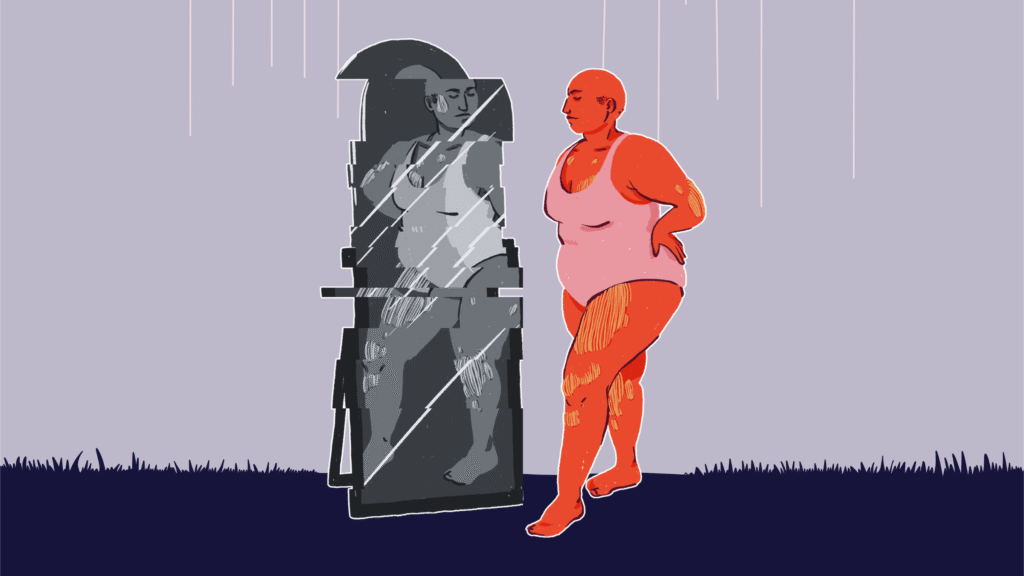TikTok’s latest challenge is meant to help us get a head start on our New Years’ resolutions, but it feels performative and unnecessary
(Photo: Ayana Underwood/Canva)
Published October 28, 2025 10:43AM
Upon seeing The Great Lock-In Challenge in my feed, I cringed, sighed, and rolled my eyes. I’ve been a health editor for nearly a decade, so I’ve seen my fair share of viral wellness challenges. In 2025 alone, we’ve been presented with the 6-6-6 Walking Challenge, 75 Soft (a less intense version of the 75 Hard), and the 75 Hotter.
While I’m a proponent of taking care of my mind and body, I’m not one to advocate for trends—at least not all of them. Some often feel performative. That’s partly because of the comparative nature of social media and partly because of the message these trends send: “I’m doing health the ‘right’ way.” But there’s no one way to be healthy. Everyone has different lifestyles, fitness goals, dietary habits, and personalities. The Great Lock-In felt like virtue signaling wrapped in a self-care bow.
The Great Lock-In, which runs from October through the end of December, is meant to prepare us for the New Year by “locking in” (the Gen-Z term for intense focus) on our wellness and financial goals now, so that whatever resolutions we choose next year feel a bit more attainable.
There are no official rules. However, some people choose similar daily goals, like hitting 10,000 steps—although we recently wrote about how this number isn’t actually necessary for good health—getting nine hours of sleep, drinking 12 cups of water, and ditching your phone one hour before bed. Some people are trying to limit spending to build up their emergency savings. Others want to commit to journaling every day or exercising X times per week.
As a health editor, I often feel pressure to be the perfect example of wellness. This pressure, however, is self-imposed.
For instance, 10,000 steps each day isn’t easily achievable for me. My job means I’m sitting at a computer very often. Sure, I get up, stretch, and take breaks, but my daily job duties don’t require movement. Back when I was a barista in college, hitting 10,000 steps a day was no problem. But I was also living with my parents, which meant fewer responsibilities, so I had more energy and more time to spend at the gym, taking pole-dancing classes, and running along the beach. My schedule now? Work. Cook. Run errands. Do laundry. Grab the mail. Take out the trash. When—and big if—I get all that done, I might have the time and energy to go for a run or a bike ride.
Another reason why I opt out of this particular TikTok challenge is that routines just don’t work for me. I always get so caught up in doing the routine that I don’t enjoy it and forget why I started it in the first place. I’m my happiest when I do things as the mood strikes. When I exercise out of joy rather than obligation, it feels more meaningful and increases the likelihood that I’ll do it again.
My biggest gripe about The Great Lock-In is that it seems like everyone posting on TikTok about it is just trying to prove that they’re winning at life. But performing and doing things for external validation is draining. Of course, sharing your goals and progress with others can be encouraging, but this challenge feels more performative than motivating.
My version of The Great Lock-In would be less about coming up with routines and goals and more about not having any and being OK with that. I don’t need to force myself to “lock in” because when something is exciting to me, I naturally give it all my attention. The only thing that matters is how we feel in our bodies—and isn’t that what being healthy is really about?
Want more Outside health stories? Sign up for the Bodywork newsletter. Ready to push yourself? Enter MapMyRun’s You vs. the Year 2025 running challenge.


